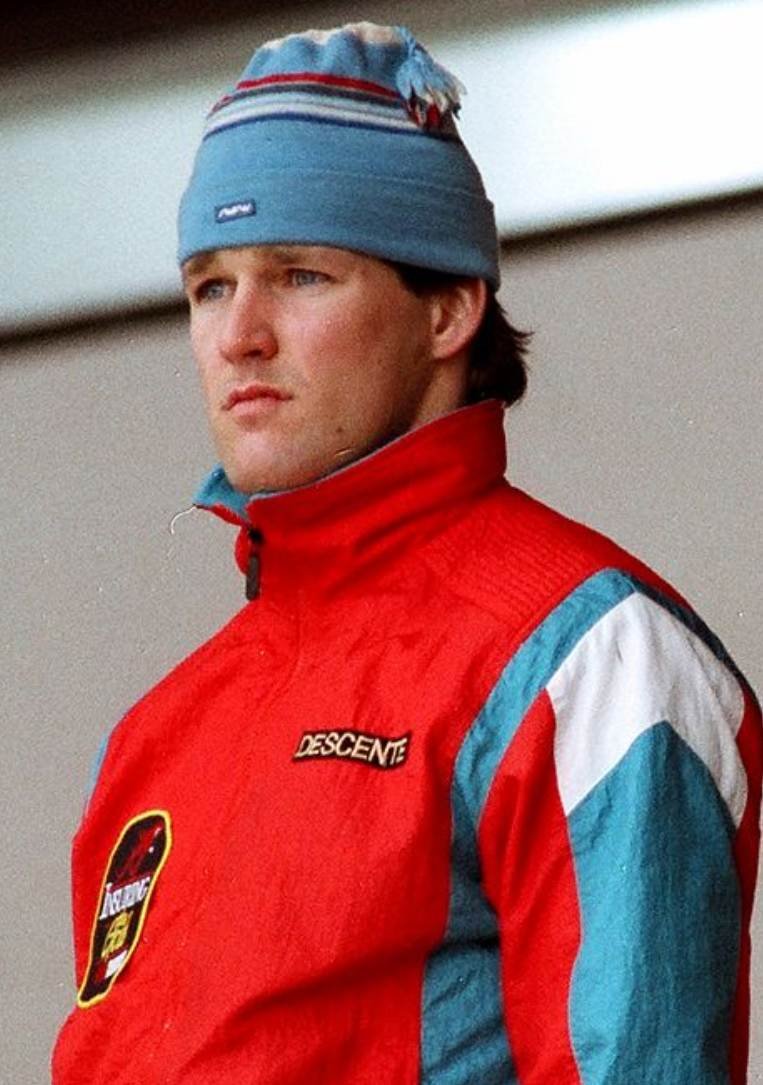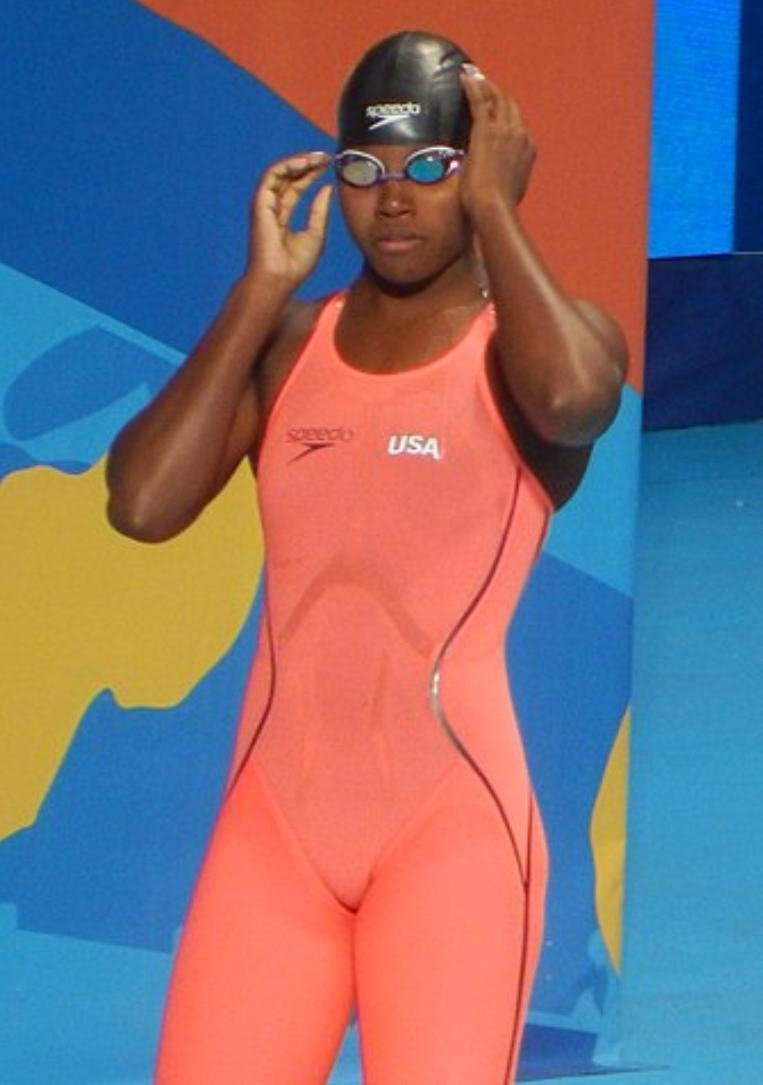The ice at the Olympic speed skating oval in Lillehammer gleamed under the lights as Dan Jansen took his mark. The American’s muscular frame tensed at the starting line, his mind quieting the demons that had haunted him through three previous Winter Games. As the starter’s pistol cracked through the Norwegian air on February 18, 1994, Jansen launched into motion, each powerful stride carrying the weight of a decade’s worth of Olympic heartbreak.
This wasn’t just another race. It was Jansen’s eighth and final Olympic appearance, his last shot at redemption on the world’s biggest stage. The story that unfolded that day would become one of the most emotionally charged moments in Winter Olympic history.
Dan Jansen’s Early Life and the Making of a Speed Skating Prodigy
Before he became known as the “Heartbreak Kid” of the Winter Olympics, Dan Jansen was just a kid from West Allis, Wisconsin with uncommon talent. The youngest of nine children in a skating-obsessed family, he took to the ice for his first race at just four years old. While most kids his age were still mastering the art of staying upright, little Dan was already showing signs of exceptional speed.
West Allis proved the perfect breeding ground for a future champion. With one of only two official 400-meter ovals in the United States, the town had developed a rich speed skating tradition. By 1972, seven-year-old Jansen had begun formal training with coach Dianne Holum, setting aside hockey for the pure speed of the oval.
His natural talent quickly translated to success. At just 16, during his first international competition, he set a junior world record. By 1983, he had claimed gold in the 500 meters at the Junior World Championship. This early promise set the stage for what should have been an illustrious Olympic career.
Olympic Debut: So Close, Yet So Far
Jansen’s first taste of Olympic competition came at the 1984 Sarajevo Games. As the youngest speed skater in attendance at just 18 years old, he nearly delivered a medal-winning performance, finishing fourth in the 500 meters – his specialty – missing bronze by a heartbreaking 0.16 seconds.
While disappointing, this near miss seemed merely a prelude to future Olympic glory. After all, between 1985 and 1994, Dan Jansen would establish himself as one of the most dominant figures in the sport, amassing an impressive collection of five gold, five silver, and five bronze medals at the World Sprint Championships. Twice he earned the prestigious title of World Sprint Champion.
By the time the 1988 Calgary Olympics rolled around, Dan Jansen wasn’t just participating – he was the favorite, the man to beat in both the 500m and 1000m races.
Calgary: When Tragedy and Sport Collided
The 1988 Winter Olympics were supposed to be Dan Jansen’s coronation. He arrived in Calgary as the reigning World Sprint Champion, riding a wave of World Cup victories. But what unfolded instead became one of the most heart-wrenching stories in Olympic history.
On February 14, 1988 – the day of his 500m race – Dan Jansen received devastating news. His older sister Jane, who had been battling leukemia, was dying. He managed a brief, one-sided phone conversation with her before competing. Hours later, the 27-year-old mother of three passed away.
Despite the crushing personal loss, Jansen’s family encouraged him to compete, believing it was what Jane would have wanted. With “Do it for Jane” as his mantra, he stepped onto the ice, carrying an emotional burden no athlete should have to bear.
What happened next seemed almost cruelly scripted. In an uncharacteristic false start followed by a fall in the first turn of the 500m race, Jansen’s gold medal hopes literally crashed onto the ice. Four days later, competing in the 1000m, he was leading for the first 600 meters before falling again, just past the 800-meter mark.
“I’ve never given up before,” Jansen would later say, “I’m not about to do it now.”
The image of Dan Jansen sprawled on the ice became an indelible Olympic moment – not for its athletic achievement but for its raw human emotion. The world watched as an athlete at the peak of his powers grappled with the intersection of personal tragedy and professional ambition. For his courage in the face of adversity, he was awarded the U.S. Olympic Spirit Award, though it offered little consolation for his shattered Olympic dreams.
Albertville: The Curse Continues
Four years later at the 1992 Albertville Games, Jansen returned with renewed determination. Between Olympics, he had continued his dominance, even setting a new world record in the 500m race.
Yet somehow, the Olympic stage remained his kryptonite. In the 500m – his strongest event – a minor stumble proved costly, leaving him in fourth place, once again just 0.20 seconds from a medal. In the 1000m, a visibly dispirited Jansen finished 26th.
The pattern seemed unbreakable. The same athlete who dominated World Cup competitions and set world records couldn’t translate that success to the Olympic Games.
As the Washington Post aptly described him: the most popular and respected Olympian—with zero Olympic medals to show for it.
Lillehammer 1994: Dan Jansen’s Gold Medal and Redemption
By the time the 1994 Lillehammer Olympics arrived, Jansen was approaching his last chance. At 28, he had spent over a decade as one of the world’s top speed skaters, holding the number one ranking for three consecutive years. But Olympic gold remained elusive.
The 500m race – his specialty – came first. In a moment that seemed to confirm an Olympic curse, Jansen slipped twice during the race, ultimately finishing eighth. Once again, his strongest event had betrayed him.
With just the 1000m left – an event where he wasn’t favored – Jansen prepared for what would likely be his final Olympic race. As he later revealed, he felt a sense of unease before the race, noting that his skates didn’t feel like they were gripping the ice properly.
Yet he started with blistering speed, positioned second after 200 meters and taking the lead by the 600-meter mark. Then came another heart-stopping moment – a slight slip that caused his wife in the stands to fear the worst. But this time, Jansen recovered.
When he crossed the finish line, the clock confirmed what seemed impossible: gold medal and world record. After eight Olympic races spanning three disappointing Games, Dan Jansen had finally achieved his Olympic dream.
His victory lap became an iconic Olympic moment as he skated around the rink carrying his nine-month-old daughter, Jane, named in honor of his late sister. Looking up, he gave a salute to the heavens – an acknowledgment of the sister whose memory had fueled his Olympic journey.
Dan Jansen’s Legacy: From Olympic Icon to Philanthropist
Jansen’s story transcends sports. It speaks to the resilience of the human spirit in the face of repeated disappointment. While many athletes would have buckled under the weight of such consistent Olympic failure, Jansen maintained his position as one of the world’s premier speed skaters for over a decade.
His fellow Olympians recognized the magnitude of his journey by selecting him to bear the U.S. flag at the closing ceremony of the 1994 Winter Olympics. He also received the Amateur Athletic Union’s Sullivan Award, honoring the nation’s most outstanding amateur athlete.
In 1995, Jansen established the Dan Jansen Foundation, which has provided crucial financial aid to over 1,200 families impacted by cancer. The foundation also supports youth sports programs, ensuring Jansen’s impact extends well beyond his athletic achievements.
The Power of Never Giving Up
What makes Dan Jansen’s story so compelling isn’t just the Olympic gold he eventually won – it’s the journey he endured to get there. It’s about falling (literally) on the world stage, getting back up, and trying again. And again. And again.
It’s about competing with a broken heart after his sister’s death, facing the disappointment of near-misses, and still believing that the next race could be different. It’s about refusing to let failure define you, even when it seems determined to become your legacy.
In a sports world often obsessed with undefeated records and flawless performances, Jansen reminds us of the power of imperfect journeys. His Olympic story wasn’t a straight line to success – it was messy, heartbreaking, and ultimately, gloriously redemptive.
The image of Jansen finally claiming his gold medal, then skating his victory lap with his daughter Jane in his arms, encapsulates everything we love about sports: the human capacity to overcome, the beauty of perseverance rewarded, and the poetic justice that sometimes, if we’re patient enough, the universe delivers.
“Without failure, there is no success,” Dan Jansen often says in his current role as a motivational speaker. Few athletes embody this philosophy more authentically.
Thirty years after his golden moment in Lillehammer, Dan Jansen’s story continues to resonate not because he was an unbeatable champion, but because he was beatable – repeatedly – yet refused to stay beaten. And in that persistence, he achieved something far more valuable than Olympic gold: he became a living testament to the unbreakable human spirit, a reminder that our greatest victories often come after our most devastating defeats.
When Jansen finally stood atop the Olympic podium in 1994, it wasn’t just a personal triumph – it was a moment of collective catharsis for everyone who had followed his heartbreaking journey. In that moment, we all learned that sometimes, the most inspiring victories are the ones that take the longest to achieve.
More Than Muscle: Turning Grief Into Gold
Dan Jansen’s story is a rare and raw example of how personal tragedy can fuel greatness—but he’s not alone. Just months before the 2008 Olympic Games in Beijing, weightlifter Matthias Steiner lost his fiancée in a tragic accident. What happened next was unforgettable: fueled by heartbreak, he lifted his way to Olympic gold and held up her photo for the world to see during the medal ceremony. Another athlete who turned pain into power. 👉 Read his story
Photo By Ineke Vogel – Own work, CC BY 3.0, https://commons.wikimedia.org/w/index.php?curid=9834237




